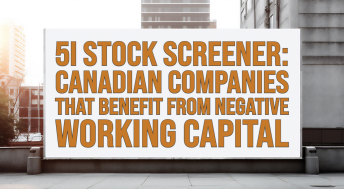Investors rarely do enough homework when investigating stocks. They might read a broker’s report, look at common metrics such as earnings and cash flow, and perhaps read a couple of investment forums for comments. But, as is commonly known, investors spend more time researching a $2,000 fridge than they do a $10,000 stock purchase.
We’re here to change this. The market is tough enough this year, so you might as well try to give yourself an edge by going the extra mile. In a bear market, remember, you’ve got more time to do research, since the market isn’t exactly surging higher every day.
Here are five less common, but no less important, things investors should look at before buying any stock, but often do not.
Research and Development Expenses: So many investors ignore this line of the income statement. But we think it is one of the first to look at, especially for certain sectors such as technology and industrials. R&D expenses show how much money the company is spending to keep its products relevant, or what it is spending on for future initiatives. It can be a drag on earnings in the short term, but R&D can also set up much more future growth (note, R&D expenses can also be capitalized).
Let’s look at Alphabet Inc., Google’s parent company. One reason it remains so dominant is that it spends more than US$30 billion annually on research. BlackBerry Ltd., by comparison, spent US$219 million on research last year. Sure, Alphabet is much bigger, but guess which company might unveil more cool new products/services a few years down the road?
Executive Compensation: Before buying shares in any company, look at the annual information form and management information circulars, available at www.sedar.com for all Canadian public companies. Check how much the senior executives get paid, and how much stock they own in their own companies. We do not mind if executives get decent salaries, but they should be within reason and proportional to the size of the company.
We once found a small health-care company that had annual revenue of less than $2 million, but the CEO’s compensation was close to $1 million. Ridiculous. We also prefer if executives own a lot of their own stock. Think of it like this: if the company fails, you want the senior executives to feel it, and hurt more than you.
10-Year Growth in the Share Count, plus the Price of the Last Issue: This is something your broker is very unlikely to tell you, because they see new share issuance as a great thing (high commissions). We do not. We prefer that a company never issues new shares, such as Constellation Software Inc. Buying back shares and reducing the share count is also good. But many companies use their shares like an ATM, continually selling shares to keep the lights on or make acquisitions.
Let’s look at Westport Fuel Systems Inc. Ten years ago, it had 55.3 million shares outstanding. Today, it has 155 million. The share count has tripled in the past decade, so long-term investors have seen significant dilution. Ten years ago, the stock was $40. Today, it is $2.07. Sure, growing companies need to sell shares on occasion, but dilution must be reasonable.
Also, look at the price of the last historical stock sale. Hint: it should be lower than the current price, or lower than the most recent sale. Companies that raise money at $10 per share, and then raise more money later at $5 per share, should be red-flagged with the darkest hue of colour available.
How the Company Fared in 2008: Since all the talk these days is about the “impending” recession we are about to dive into, it is important investors think about the downside risks of their investments. In the great financial crisis, many companies didn’t survive. We highly doubt any upcoming recession will be that bad, but it can be constructive to see how your companies did during those dark times, just so you know whether they have the ability to survive a sharp economic downturn.
Looking at your companies’ earnings in 2008 and 2009 might give you a worst-case scenario so you are at least prepared for some bad times ahead. If the company you are looking at lost tons of money in that recession, then your risk in holding it may be higher than you are prepared for (also see the debt point below in this case).
Debt Maturity Schedule: Debt often gets a bad reputation, but it can be very useful at times for growing companies. For one, interest on debt is tax deductible. Two, issuing debt prevents additional dilution to shareholders from selling new shares. But debt can be a company killer in a recession.
Many investors will look at total debt exposure when examining a potential investment. This is important, but many will fail to look at the debt maturity schedule: that is, when the debt comes due. A company with $500 million in debt maturing over the next 10 years is far safer than a similar-sized company with $500 million in debt maturing next month.
Debt has a way of coming due when times are tough, so make sure the company you are buying — if it has any debt at all — has the debt well spread out so it doesn’t have to refinance it all at once. This information is typically available in the notes of the financial statements.







Comments
Login to post a comment.